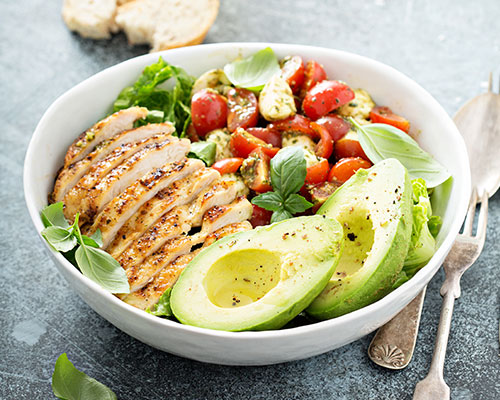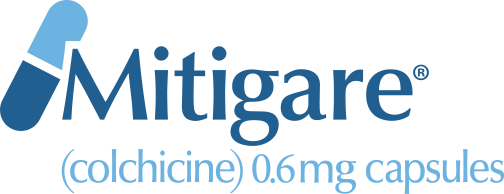
While it’s a great idea to follow a well-balanced diet, it’s especially important for gout sufferers to watch what they eat. Cutting down on or eliminating certain foods can make a difference in preventing gout flares.1 Read on to learn more about the best gout diet including what to eat and what to avoid.
What is gout?
Gout is a form of inflammatory arthritis that impacts more than eight million Americans.1 The disease typically appears first in the big toe, but also can affect the midfoot, ankles, knees, elbows, wrists and hands.2 In addition to intense pain, gout can cause tenderness, redness and/or swelling.2
What causes gout and gout flares?
Gout is caused by abnormally high uric acid levels, a condition called hyperuricemia.3 The body produces uric acid when it breaks down chemicals called purines. Purines are found in certain foods and beverages and also occur naturally in the body.3
For most people, the body eliminates uric acid through the urine.3 In adults with gout, however, uric acid builds up in the bloodstream.4 This build-up can eventually cause tiny, needle-shaped urate crystals to form in the joints.2 If you have gout, consuming foods and drinks that are high in purines may trigger painful attacks, also known as flares.4
Can changing my diet help me avoid gout flares?
Visiting your doctor and setting up a gout treatment plan is the first step to managing your gout. However, lifestyle changes—including adopting a gout diet—can be helpful as well.3
The best foods for your gout flare prevention diet
If you have gout, you can enjoy many different lower-purine foods almost anytime.3,5 These foods include3,5:
- Low-purine proteins, such as chicken
- Low- or non-fat dairy products such as milk, yogurt or cheeses
- Potatoes
- Most vegetables
However, you’ll want to limit your intake of3,5:
- Pork, beef and lamb
- Shellfish, such as shrimp and lobster
- Oily fish, such as anchovies, tuna, scallops, haddock or herring
- Salt and sugar (including that found in sauces and gravies)
And make a point to avoid3,5:
- Organ meats such as sweetbreads, liver and kidney
- High-fructose corn syrup (often found in sodas, other beverages and processed foods)
The best beverages for your gout diet
Drinking more water may help you to avoid gout flares.6 A 2009 study showed that with each glass of water consumed in the 24 hours before an attack, the risk for recurrent gout attacks decreased.6 The study could not make a specific recommendation about how much water is most beneficial, however.6 Talk with your doctor about the right amount of water for you to drink each day.6
Caffeinated coffee also may be beneficial because it is believed to be associated with a reduced risk of gout flares.3 Be sure to talk with your doctor before increasing your caffeine intake, however. 3 This is especially important if you have other health problems.3
Do your best to limit your intake of sweet beverages such as sodas and fruit juices.5 And avoid drinking alcoholic beverages, as they can raise your risk of gout flares.7
What else do I need to know about a healthy gout diet?
Whether you have gout or not, it is a good idea to eat a healthy diet. This means consuming a variety of vegetables, fruits, whole grains, low- or non-fat dairy products and lean meats. Eating moderate portions of healthy foods and staying well hydrated may help you to achieve an appropriate weight and improve your overall well being. If you have questions about a healthy gout diet, be sure to talk with your doctor.
NOTE: This article was not written by a medical professional and is not intended to substitute for the guidance of a physician. These are not Hikma’s recommendations for gout flare prevention, but rather facts and data collected from various reliable medical sources. For a full list of resources and their attributing links, see below.
